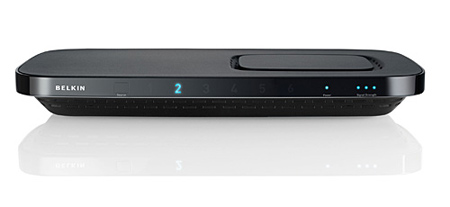Wireless HD standards battle for supremacy

It's pretty clear that the future for sending high-definition content to HDTVs is wireless, since it eliminates all those cables that everyone is trying to hide behind walls, in home theater cabinetry, or however else they can. But as is often the case with nascent technologies, the best approach for transmitting wireless HD is up for grabs.
The upcoming CES spectacular next month in Vegas will present a showcase for new products championing one standard or another. In fact, market research firm Parks Associates is planning a panel where four proponents of those methods&—WirelessHD, WHDI, wireless HDMI, and 802.11n#151;will duke it out. Of course, the marketplace is where the real fight will take place, and it's still too early to declare a winner, since virtually no wireless HD products are available in the U.S. The Belkin FlyWire (pictured above) looked very promising when it was first unveiled last summer, but its release date has now been pushed back to the second half of next year, and it costs $1,500. Another (and available) product of note in this space has been Sony's Bravia DMX-WL1, a wireless module that costs $800. It uses Amimo's WHDI chipset; other WHDI supporters include Hitachi, Motorola, Sharp, and Samsung.
Sharp and Samsung also support WirelessHD, which counts as Intel, LG Electronics, Panasonic, and Toshiba as other backers. Westinghouse has partnered with Pulse~Link to create HDTVs using CWave Wireless-for-HDMI technology, while British company ProVision Communications is set to announce products based on the 802.11n Wi-Fi standard, which is certainly the most familiar technology, if one that has yet been promoted by any TV maker. One additional alternative is Sigma Designs' WirelessHDAV, which Monster Cable is using for its Monster Wireless Digital Express HD system. Announced in the fall, it's now slated for the "near future" and will cost $1,000.
There should be plenty to report from CES on the topic when I hit Vegas next month. But you can be sure, any new wireless HD products will be expensive and have plenty of kinks to work out.
